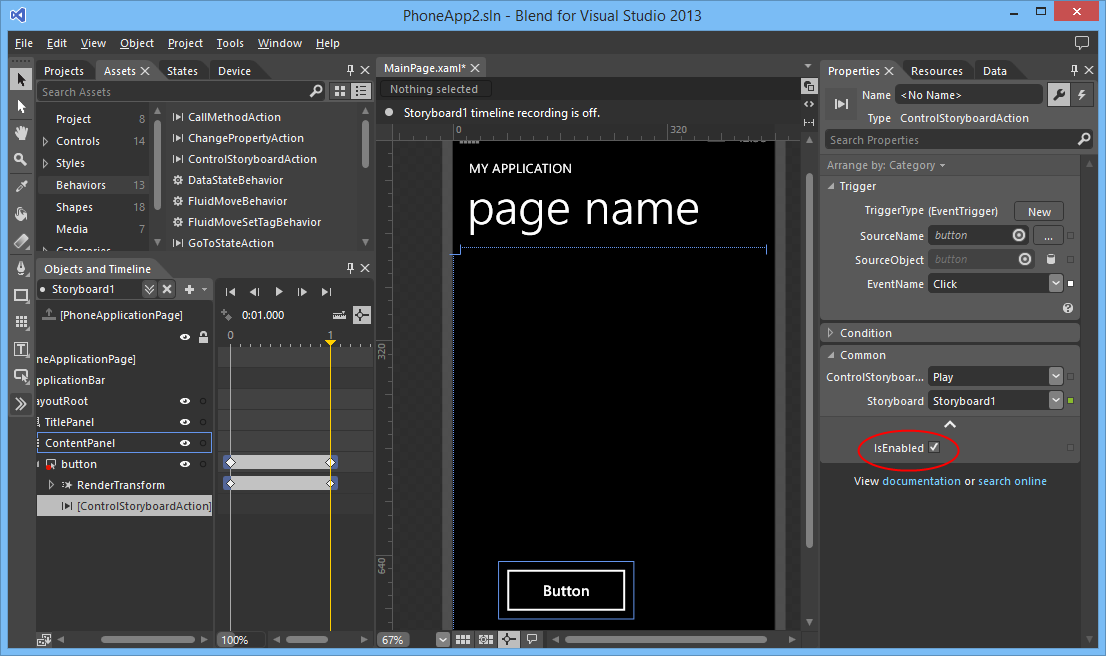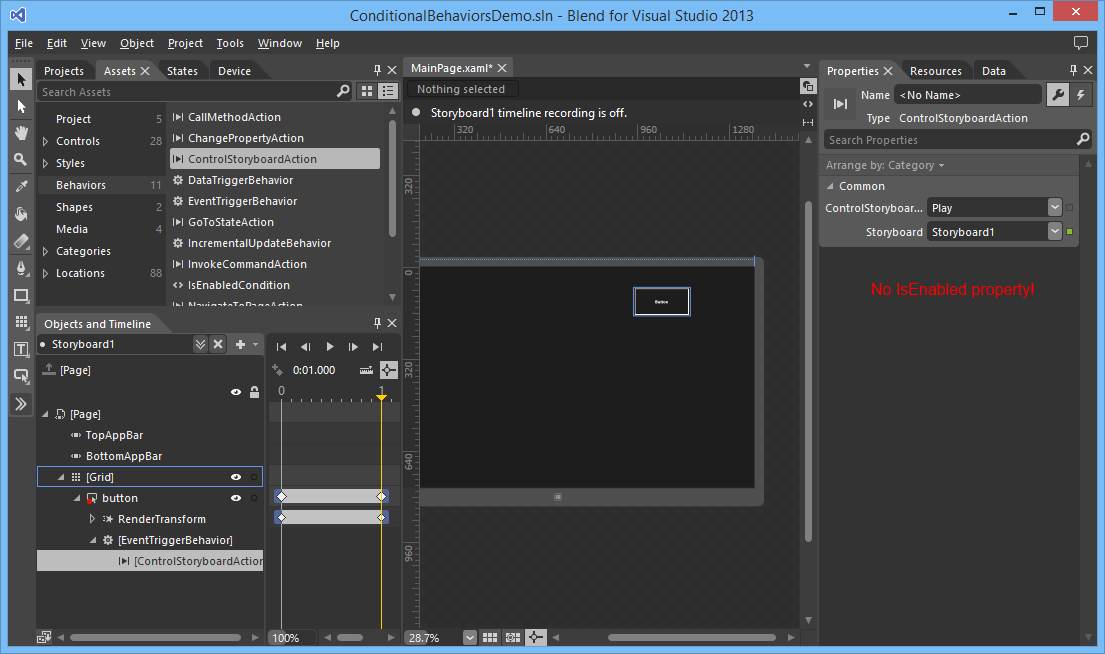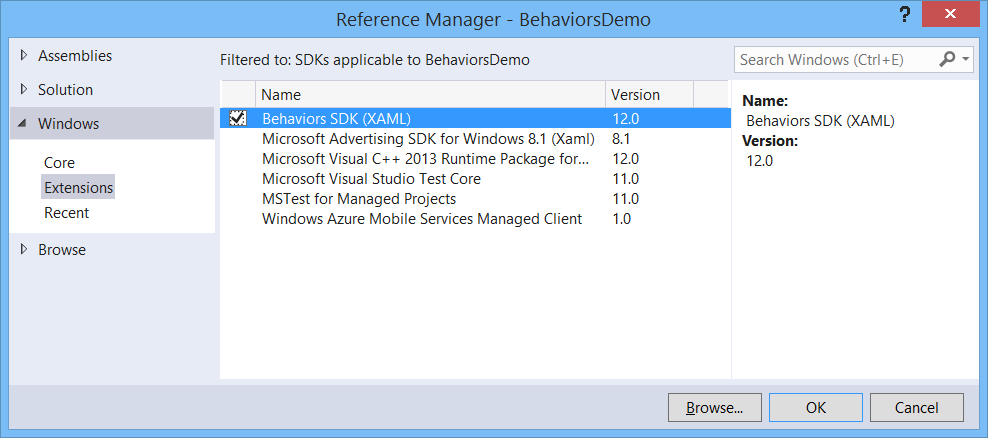XAML is a declarative UI language; it's most powerful feature is surely data binding. In XAML you can set a converter on any binding. You use this when you need to display data in a format that differs from how it is stored. But you can only set ONE converter. So if you for instance want to convert a date using a FormatConverter and you want to convert the result to uppercase using a UppercaseConverter you are stuck. To solve this problem I have created a ValueConverterGroup class. It is a converter which contains multiple converters, it is a List of IValueConverter objects and it implements the IValueConverter interface. The Convert() method calls the Convert() method of all containing value converters. I haven't implement the ConvertBack() method because I won't be using it.
In XAML applications you can use a Popup control to displays content on top of existing content. To show a Popup you must set the IsOpen property to true. You can subscribe yourself to the Closed eventhandler which is fired when the IsOpen property is (re)set to false. You can use this event to execute extra logic when the Popup is closed.
To make this easier I have created an ShowAsync() extension method which does this for you. I got my inspiration for this solution from this Awaiting Storyboard completion blog post by Nigel Sampson. He uses this technique to begin a storyboard using a BeginAsync() extension method.
A few weeks ago I have written a blog post about how you can write your own Behaviors and Actions for Windows 8.1. I noticed that the Windows 8.1 Actions are not compatible with the Silverlight and Windows Phone Actions. Those actions have a IsEnabled property.

The Windows 8.1 Actions don't have an IsEnabled property.

Luckily I got a tip from the Microsoft XAML Tools team. A new feature that is added to the Behaviors SDK is that Actions can return results as well as have its own ActionLists. This helps in relaying execution results or building conditional behaviors.
The new version of Blend for Visual Studio 2013 RC now supports Behaviors. I have used Behaviors for developing Silverlight and Windows Phone applications a lot. Now you can use them for you Windows Store XAML apps too. Two type of Behaviors are supported: Behaviors and Actions. Triggers are "dropped" and can/should now be implemented using Behaviors.
There are 7 build-in Actions: CallMethodAction, ChangePropertyAction, ControlStoryboardAction, GoToStateAction, InvokeCommandAction, NavigateToPageAction and PlaySoundAction. Many were already available in Silverlight. The NavigateToPageAction is new.
There are 3 build-in Behaviors: DataTriggerBehavior, EventTriggerBehavior and IncrementalUpdateBehavior.
You can create your own Actions and Behaviors. Before you can do that you must add a reference to the 'Behaviors SDK'.

While watching the Automated Testing of XAML-Based Windows Store Apps Build session on video I learned something new. There is a new way in Visual Studio 2013 to do data-driven unit testing using the DataRowAttribute. I couldn't find much documentation or samples so I will try to explain it in this blog post.
I have many app is the Windows 8 store now. My Sudoku Free app is the most popular one. It has almost 500.000 downloads and it is played around 13.000 a day. Until recently I received many mails on how to use the app. My support email address is in the Settings panel. Most of these mails where request to add features to the game like 'can I validate a puzzle?', 'can I solve a puzzle?', 'can I get statistics?' or 'can I get a hint?'. Those features are all available in the AppBar of the game. My conclusion is that the average user is still not aware that the AppBar can exist.
To make my users aware of the AppBar I added a peek behavior to it. When you start a sudoku puzzle the AppBar peeks out for just a second, see video. After the implementation I got almost no more of those emails any more.
De video van mijn 'Black Belt XAML Data Binding' TechDays NL sessie staat online op Channel 9. Vorige week heb ik de presentatie en demo reeds gepubliceerd. Bekijk ook de overige videos van TechDays 2013 the Netherlands of TechDays Belgium.
Op 7 en 8 maart heb ik weer bij het TechDays 2013 event van Microsoft een aantal sessies gepresenteerd. Op veler vezoek publiceer ik hier de presentaties en demo's van mijn sessies. Op Channel 9 zal binnenkort de video van mijn Black Beld XAML DataBinding presentatie getoond worden.
Black Belt XAML DataBinding presentatie
Black Belt XAML DataBinding demo
Designing Windows Store apps using XAML and Blend presentatie
Designing Windows Store apps using XAML and Blend demo
Doordat Tom Verhoeff ziek was heb ik zijn 'Monetizing Windows (Phone/8) apps' sessie overgenomen.
Monetizing Windows (Phone - 8) apps presentatie
Cheers,
Fons
Besides Windows Phone and Windows 8 apps I develop Web sites using ASP.NET. In ASP.NET Web Forms you can define a MasterPage. This technique is called Layout pages in ASP.NET MVC. A simular technique can also be used in your Windows Store apps using XAML. In this blog I will explain how.
Adding a background image to a Windows 8 Store application in XAML can be done in a few different ways. If your app supports navigation between pages you don't want to reload the background image when you navigate to a different page. This doesn't look right on slower ARM devices like the Surface, you will see the image flicker. In this blog I will demonstrate how to set the background image in 3 different ways. The last one without the image flickering.


